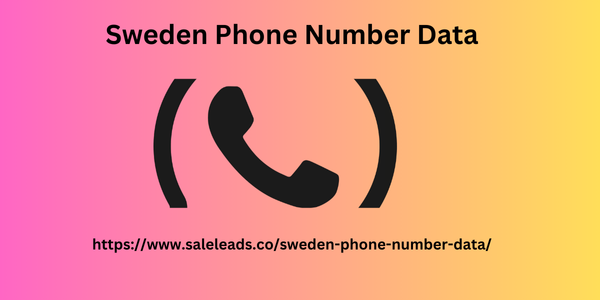|
|
The use of telephone numbers in Sweden shows strong regional variations, reflecting the country's geographical and cultural diversity. The differences are mainly expressed in the structure of phone numbers, the prevalence of landlines versus mobile phones, and the local communication preferences.
Area Codes and Structure
Swedish phone numbers include a two-digit area code followed by an eight-digit subscriber number. The area codes are geographic, which influences how numbers are perceived and used in different regions. For instance, Stockholm Sweden Phone Number Data has 08, Gothenburg uses 031, and Malmö has 040. These area codes not only identify the location of the number but also determine the way local dialing is done and how people interact with each other.
Urban versus Rural Use
There is a big difference in the use of phones between urban and rural areas. In cities like Stockholm and Gothenburg, for example, mobile phones have taken over because of their handiness and the wide coverage provided by telecom operators. On the other hand, in rural areas, especially where the network for mobile phones may be less good, landlines still have an important place. Many households in these areas keep traditional phone lines for stability, especially for emergency services and local communication.
Communication Preferences
Cultural attitudes toward communication also vary geographically. City dwellers prefer to use mobile apps and messengers for daily communication because it is faster and corresponds to the rhythm of a big city. People in rural areas may prefer voice calls or direct contact, believing that personal contact is more important than the Internet. This can affect the way companies communicate with their customers and thus create marketing strategies targeted at local specifics.

Number Portability and Provider Competition
The competitive landscape also changes across different regions within the country. Large providers like Telia, Tele2, and Telenor sometimes have varying plans and services depending on the demand of a certain region. Number portability allows users to switch providers while retaining their phone numbers, which may further lead to variations in service quality and customer experience across different areas.
Conclusion
Area codes, urban versus rural dynamics, communication preferences, and provider competition are some of the factors that shape regional variations in phone number usage in Sweden. These differences need to be understood by both residents and businesses in order to navigate the telecommunications landscape effectively. As technology continues to evolve, these regional characteristics will likely adapt, further influencing how Swedes connect and communicate.
|
|